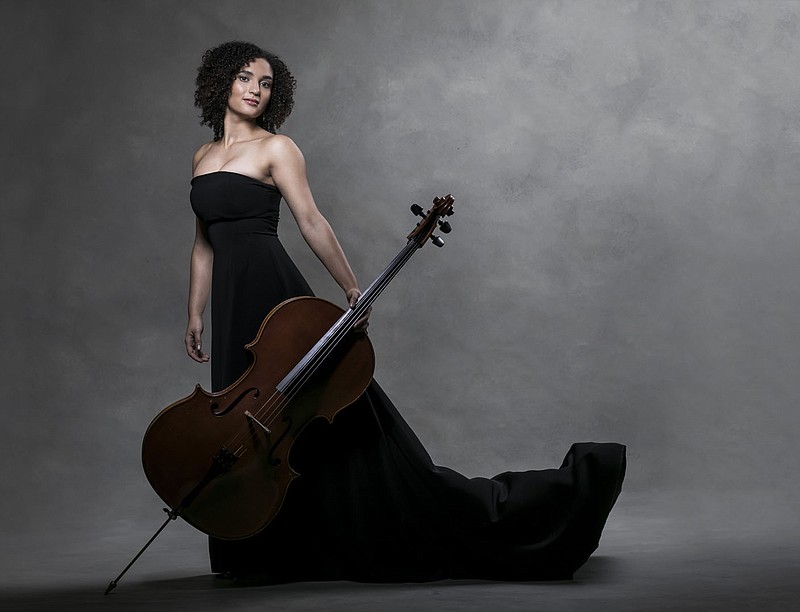Cellist Anita Graef grew up in Chicago "surrounded by music."
"Nearly everyone in my immediate family is a professional musician, in fact," she says. "The story goes that when I was 2 years old, I woke up one morning and told my parents I wanted to play cello. ... They made me deal; if I started piano studies and still enjoyed studying music, then we could talk about getting a cello when I was 4. Sure enough, on my fourth birthday, I woke up and my first move was to demand my cello!
"To this day, I can't recall what it was that drew me to the cello specifically, but I know something about the sound must have captivated me."
Graef is guest artist Oct. 13, when the Arkansas Philharmonic presents "Innovations: A Celebration of Breakthroughs" in conjunction with the "Fashioning America" exhibit at Crystal Bridges Museum of American Art. She answered these questions for What's Up!
Q. How did those childhood passions turn into a career direction?
A. From the beginning, I was always certain that I would become a cellist and spend my life immersed in music. ... Looking back, in many ways I am glad that my early years were driven by such innate surety, because it somehow never occurred to me to be deterred by the incredible odds and extreme competitiveness inherent in our field. ... Instead, I focus on centering my work in the idea of service to others. Essentially, performing music is about improving the quality of someone else's life, shifting perspectives, creating a moment of communal connection. With this notion at the forefront of one's attention, I think it becomes much easier to enjoy the process of making art, without being hampered by the need for external validation.
Q. Where is home for you now and what is a typical day like for you?
A. These days, I reside in my hometown of Chicago, though I spend much of my time traveling for performances. I love how many new places I have gotten to visit because of my life in music, but I am also definitely a homebody who enjoys a day-to-day routine. During a typical day at home, I will usually start my morning with meditation and some quiet time with a book -- I'm a voracious reader, and always looking for book suggestions! Then I will usually head to the gym -- weightlifting has been my preferred form of exercise for the past decade or so. If I have time, I love to work on a crossword puzzle over breakfast. Then it's practice time. I've noticed that I do better work with my instrument during the first half of the day, so it's important to me to have this time reserved exclusively for practicing. The later afternoon is usually accompanied by a mountain of office work, usually pertaining to the business side of the job; fielding questions, programming future concerts, and sometimes participating in interviews like this one!
The evening may bring a night out with friends, family time, or just enjoying an evening in. With all the time I spend traveling for concerts, I appreciate having days at home to rest and recharge.
Q. What will you be playing with APO? What do you love about the music and what are the challenges?
A. I will be performing Camille Saint-Saens' Cello Concerto No. 1 in A Minor, Op. 33 with the APO. This concerto is one of my favorites, and one many cellists learn early in their careers. However, it should not be underestimated, as it contains some fiendishly difficult moments. The three movements of the concerto are played through without pause, creating an exhilarating atmosphere. Both performers and audience are treated to moments of blazing intensity, intimate delicacy, and passages of aching beauty. I am so excited to share the abundant joy contained within this masterpiece with the APO audience.
Q. What can you say to encourage people not to be intimidated by classical music?
A. I truly believe that ultimately, good music is good music, irrespective of origin. As an audience member, there is really no level of scholarship that is necessary to "get" a classical music concert. The music is there to move you, to transport you, to make an impact on you. Your only task is to listen.

